Text
Images of Females Advertising Dove
Dove has been around for decades since the 1950’s and it has changed its marketing style since launched. Dove in the beginning had only white faces and today its very diverse. Dove now aims towards diversity and produces products for different skin types. Within the last two decades the brand has promoted positive body image, became more diverse in terms of ethnicity, gender, and race. From the beginning where the models were white and thin until present time, where we have a host of many beautiful shades and sizes of women.

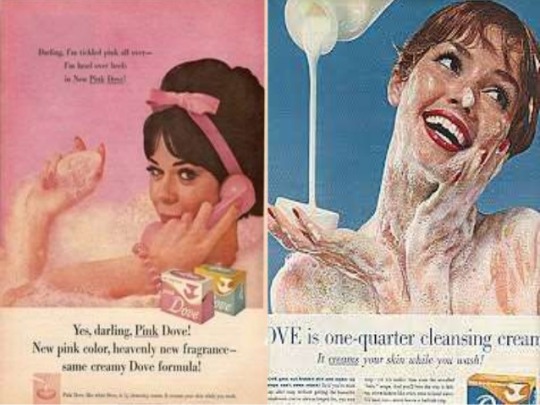
“The Use of Black Models in Advertising” This article was published in 1971, the article was about the reasons why black models are used for advertising. According to the article black models are used in marketing to sell products to black people. After the civil rights movement and new laws created in the legislature, marketers had to prepare for a new world in which black people would have a voice and more money to buy their products. As well as whites realizing that “black money” is the same as “white money”, both are green; so, with that realization, white businessman became smarter and began marketing black people in positive light for profit.
In the 1950’s concerning size, women were more concerned about having a slim figure, the ‘ideal’ size for attracting a man; Most ads you see on tv or in the magazines/newspapers in the 20th century would be of a slender sized woman, in addition, everyone was attracted to that size. Most of the advertising from the 50’s to the 70’s lacked people of color and of plus sized. I noticed that they choose light skinned black women over dark-skinned black women. As time passed, they began implementing dark skinned women. Marketers usually produced what they felt would sell and what attracts people to buy their products. The secret to advertising is subliminal messaging; subliminal messages is to gain favor with the consumer you’re targeting. For instance, if marketers placed more curvier women in their ads the world would be more accepting.
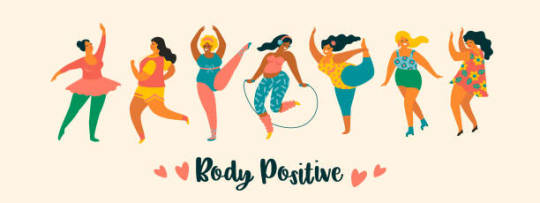
The early 2000’s Mo’nique (comedian/actress) sort of pushed away the fat shaming when she glorified her size. Mo’nique made ‘fat’ girls feel more beautiful and accepted. In 2005 She hosted the first televised beauty competition and boot camp for full-sized women “F.A.T. Chance,” on the Oxygen station. Mo’nique encouraged other plus size women to love the body they’re in and that they too are normal. “With its debut in 2005 it was the highest-rated original show in the company’s history, and in the second season it had a total of 4.8 million viewers for the premiere and its encores” (Luckily, There’s Plenty of Her for Everybody). There's a market for plus sized women just as there is for ‘regular’ sized women. The views on that show proved that people are interested in a plus sized/curvy woman's lifestyle also people support the body images. The ratings definitely boosted confidence in other plus sized women. Everyone comes in different sizes and should love every inch of themselves and only change for themselves, and of course for a healthier you. “Women are more than the labels that are given to us, they're more than an age, more than a size, more than a name...” (Dressbarn Launches an Empowering Campaign Starring Ashley Graham).

You’d be surprised the amount of negativity and pressure women endure daily, in terms of body image. Super model Tyra Banks has been shunned for her body a few times in her modeling career. It has become so bad that it took a toll on her career. “Banks said her desire to be her own boss came from rejection she faced for her skin color and curvier figure, which she said was not desirable in the world of high-fashion modeling. “Me being a boss came from pain,” she said. “Being told no you can’t.” ...” Those experiences “created in me an empathy for women and physical discrimination,” (Tyra Banks on Body Shaming in the Fashion Industry: ‘My Pain Turned Me Into a Boss’). Banks kicked off her own show “Americas Next top Model”, there she featured models of many sizes and ethnicity's. She also featured women who were more on the heavy side, also known as ‘plus sized’. Banks also bridged the way of women flaunting, loving their bodies no matter their size. “Body-positive advertisements often feature individuals helping others recognize their inner beauty, and these images of support and kindness could potentially evoke elevation in audiences” (Feeling Bad About Feel-Good Ads: The Emotional and Body-Image Ramifications of Body-Positive Media).
youtube
In 2017, Dove offered a Nigerian lady Lola Ogunyemi, to be the face of a new body wash campaign. Lola was excited for the Opportunity, stated, “Having the opportunity to represent my dark-skinned sisters in a global beauty brand felt like the perfect way for me to remind the world that we are here, we are beautiful, and more importantly, we are valued” (I am the woman in the 'racist Dove ad'. I am not a victim), however the commercial sparked a lot of negative backlash due to the content of the advertisement. Due to all the negative comments and controversy around the ad, it was removed, and Dove apologized if they came off as ‘racist’. Besides the backlash the brand has received, I thought it was a great opportunity for Dove to display a dark-skinned person and show the world that dark skin women are real, and beautiful.
“I know that the beauty industry has fueled this opinion with its long history of presenting lighter, mixed-race or white models as the beauty standard. Historically, and in many countries still today, darker models are even used to demonstrate a product’s skin-lightening qualities to help women reach this standard” (I am the woman in the 'racist Dove ad'. I am not a victim).
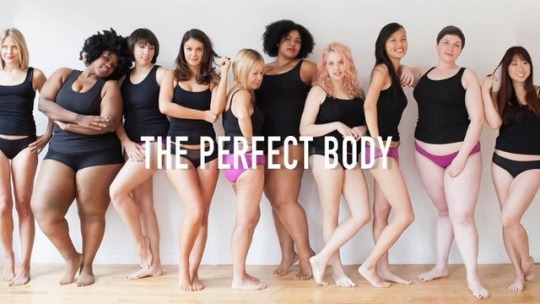
Although women are still body shamed and go to extreme measures to get the ‘perfect’ body Dove has launched a “Real Beauty campaign”, encouraging people all over the world to flaunt their imperfections and love themselves. “...viewing body-positive advertisements, as compared to traditional beauty ads, sparks stronger emotional responses, including both positive and negative emotions” (Feeling Bad About Feel-Good Ads: The Emotional and Body-Image Ramifications of Body-Positive Media). Under the Real Beauty campaign is the “Self Esteem Project”, “According to the research, 61% of girls between the ages of 10 and 17 in the U.K. lack confidence and body esteem, while nine in 10 girls with low body esteem are likely to put their health at risk trying to conform to what they believe is expected of them. Dove is spending 1.5 million pounds on the campaign, which also offers free advice and support around the issues of self-esteem on the Dove web site” (Dove spearheads ‘Self Esteem Project’ to salute and honor real girls). Dove works with non-professional models to help with the campaign to help build positive body confidence in the girls.

Over the past few years Dove has been pushing towards more diversity and knocking out beauty stereotypes. Dove works with people nationwide from infants to elderly people from shades of lighter skinned to shades of darker skins. Big, small, short, tall, slim, hefty, you name it, all types of people. People with physical disabilities, skin conditions i.e, vitiligo. People with ‘bad’ acne, crooked teeth, missing teeth, birth marks, nappy hair, straight hair, short hair, long hair, locked hair, a whole variation of people. Size and color of skin doesn’t define you, when you look at yourself in the mirror you should love every inch of yourself, and if weight is an issue that bothers you, get in the mind set of changing your weight. I just want everyone to know we all are beautiful in our own way.
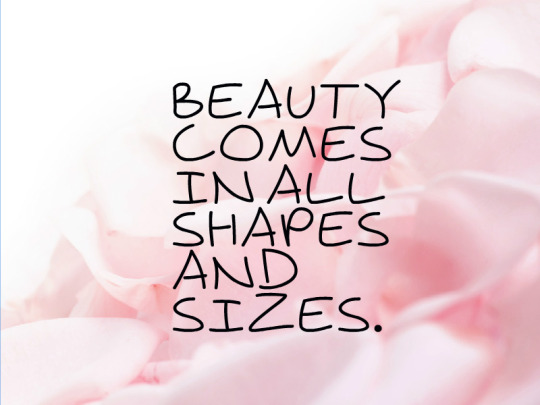
On their website, Dove welcomes everyone and gives you a feel of comfort that purchasing their product would be one of the best decisions you’ve made in terms of beauty. “Welcome to Dove…the home of real beauty. For over a decade, we've been working to make beauty a source of confidence, not anxiety, and here's where the journey continues. Beauty is not defined by shape, size or color – it’s feeling like the best version of yourself. Authentic. Unique. Real. Which is why we’ve made sure our site reflects that. Every image you see here features women cast from real life. A real life version of beauty...” (Dove). Dove is displaying that there are different forms of beauty.
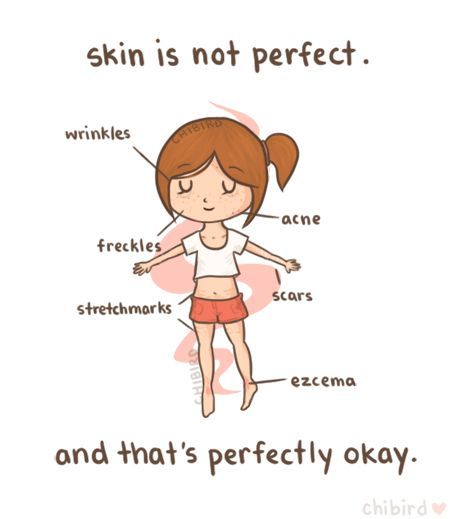
I love the approach that Dove has taken, it’s allowing the younger generations to see that they are beautiful and that the models they see on tv are superficial, yet the models are beautiful as well. Society has deemed being ‘fat’ to be ugly! Being darker skinned to be ‘ugly’! Being gay abnormal! The beauty campaign of Dove has helped millions recognize that you can look pretty without any makeup and you can love yourself no matter what condition you’ve been diagnosed with. You can still relate to others because we all have imperfections.

Society today has left many of us questioning our true selves. "Am I too fat?", "Am I really ugly?" , "Will I be accepted regardless of my sexual orientation?". Despite pondering our insecurities, DOVE has helped many people like you & me recognize our natural beauty. From my personal experience, using DOVE has made my skin feel so radiantly beautiful which has reflected beauty in my self image. Using DOVE has not only allowed me to recognize the beauty in myself but also in the beauty that would open up to those around me. The DOVE campaign demonstrates a relatively natural use of soap that encompasses beauty and self-image. This soap has a diverse ability to help make us appreciate both our physical and mental forms.
youtube
youtube
youtube
References
Kraus, A., & Myrick, J. G. (2018). Feeling Bad About Feel-Good Ads: The Emotional and Body-Image Ramifications of Body-Positive Media. Communication Research Reports, 35(2), 101–111. https://doi-org.libserv-prd.bridgew.edu/10.1080/08824096.2017.1383233
JOHN J. WHEATLEY. The Use of Black Models in Advertising. Journal of Marketing Research, [s. l.], v. 8, n. 3, p. 390, 1971. DOI 10.2307/3149585. Disponível em: http://search.ebscohost.com/login.aspx?direct=true&db=edsjsr&AN=edsjsr.10.2307.3149585&site=eds-live. Acesso em: 26 nov. 2019.
“Dove Spearheads 'Self Esteem Project' to Salute and Honor Real Girls.” Los Angeles Times, Los Angeles Times, 27 Dec. 2017, https://www.latimes.com/fashion/la-ig-wwd-dove-self-esteem-project-20171227-story.html.
Lee, Felicia R. “Luckily, There's Plenty of Her for Everybody.” The New York Times, The New York Times, 5 Aug. 2007, https://www.nytimes.com/2007/08/05/arts/television/05lee.html.
Lopez, Ricardo. “Tyra Banks on Body Shaming in the Fashion Industry: 'My Pain Turned Me Into a Boss'.” Variety, 6 June 2018, https://variety.com/2018/film/news/tyra-banks-on-body-shaming-in-the-fashion-industry-my-pain-turned-me-into-a-boss-1202834241/.
Ogunyemi, Lola. “I Am the Woman in the 'Racist Dove Ad'. I Am Not a Victim | Lola Ogunyemi.” The Guardian, Guardian News and Media, 10 Oct. 2017, https://www.theguardian.com/commentisfree/2017/oct/10/i-am-woman-racist-dove-ad-not-a-victim.
“Welcome to Dove.” Dove US, https://www.dove.com/us/en/home.html.
Williams, Lashauna, and Lashauna Williams. “Dressbarn Launches an Empowering Campaign Starring Ashley Graham.” InStyle.com, 7 Dec. 2019, https://www.instyle.com/fashion/ashley-graham-dressbarn-more-than-a-name-campaign.
4 notes
·
View notes